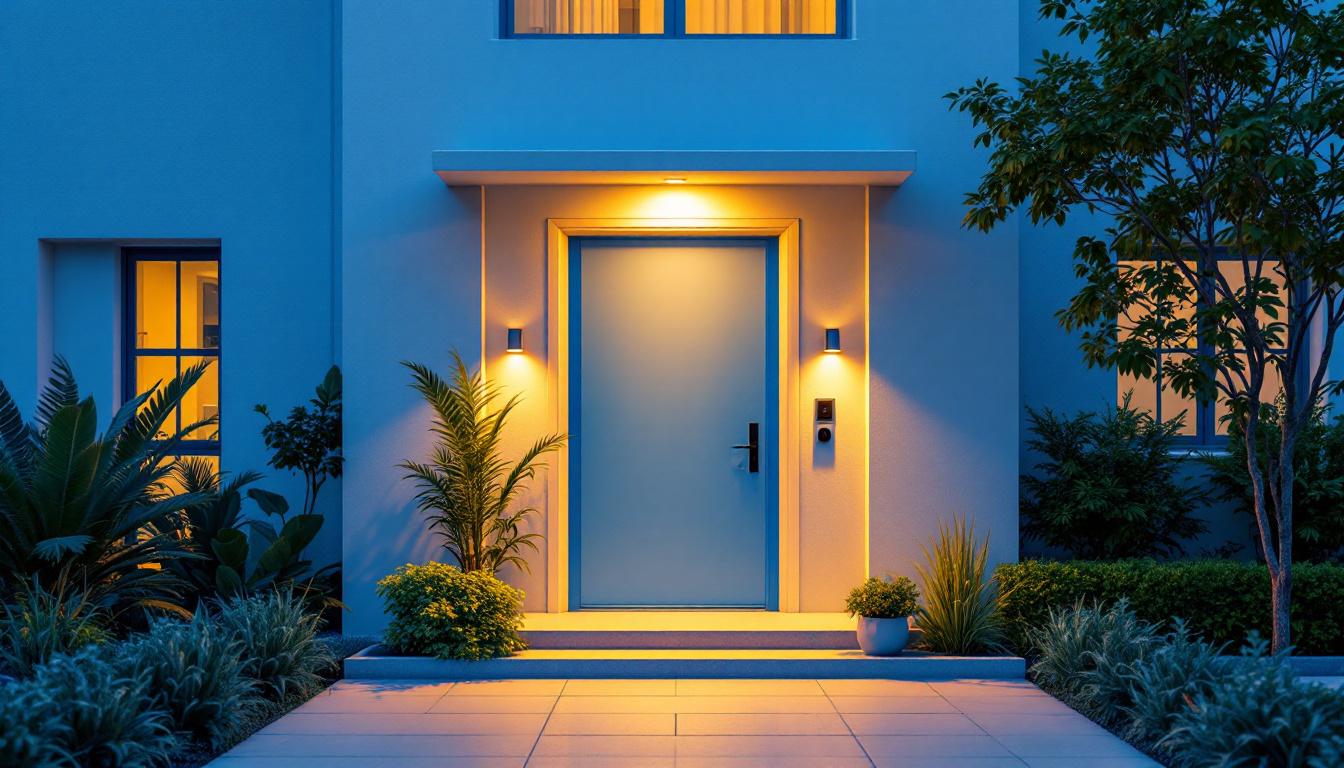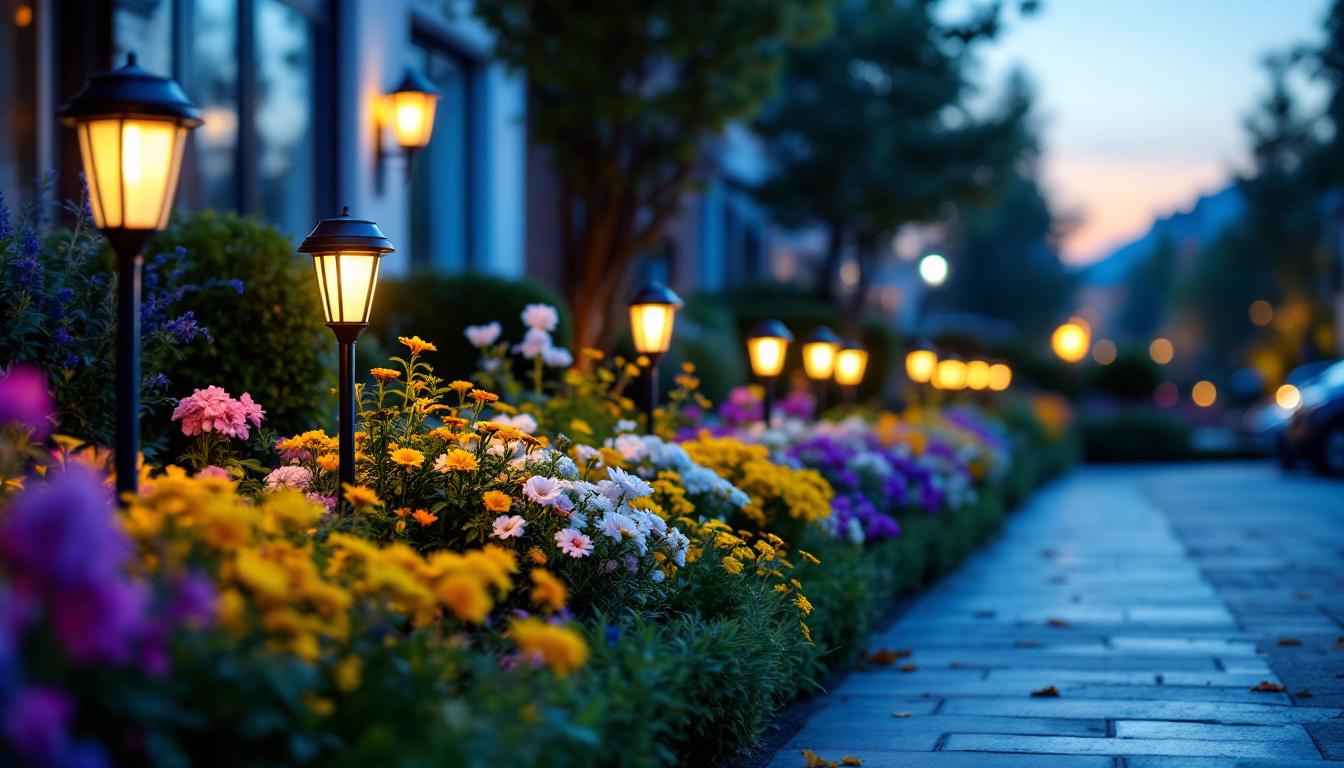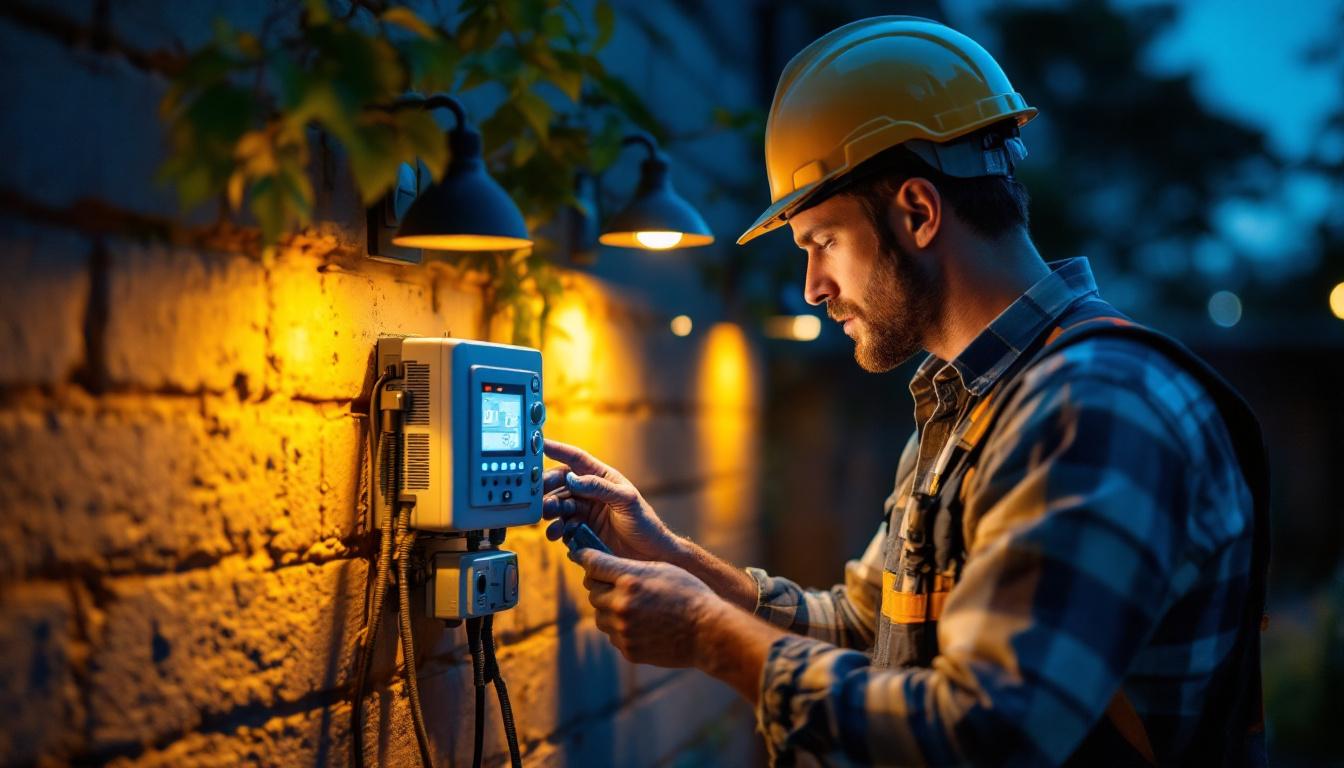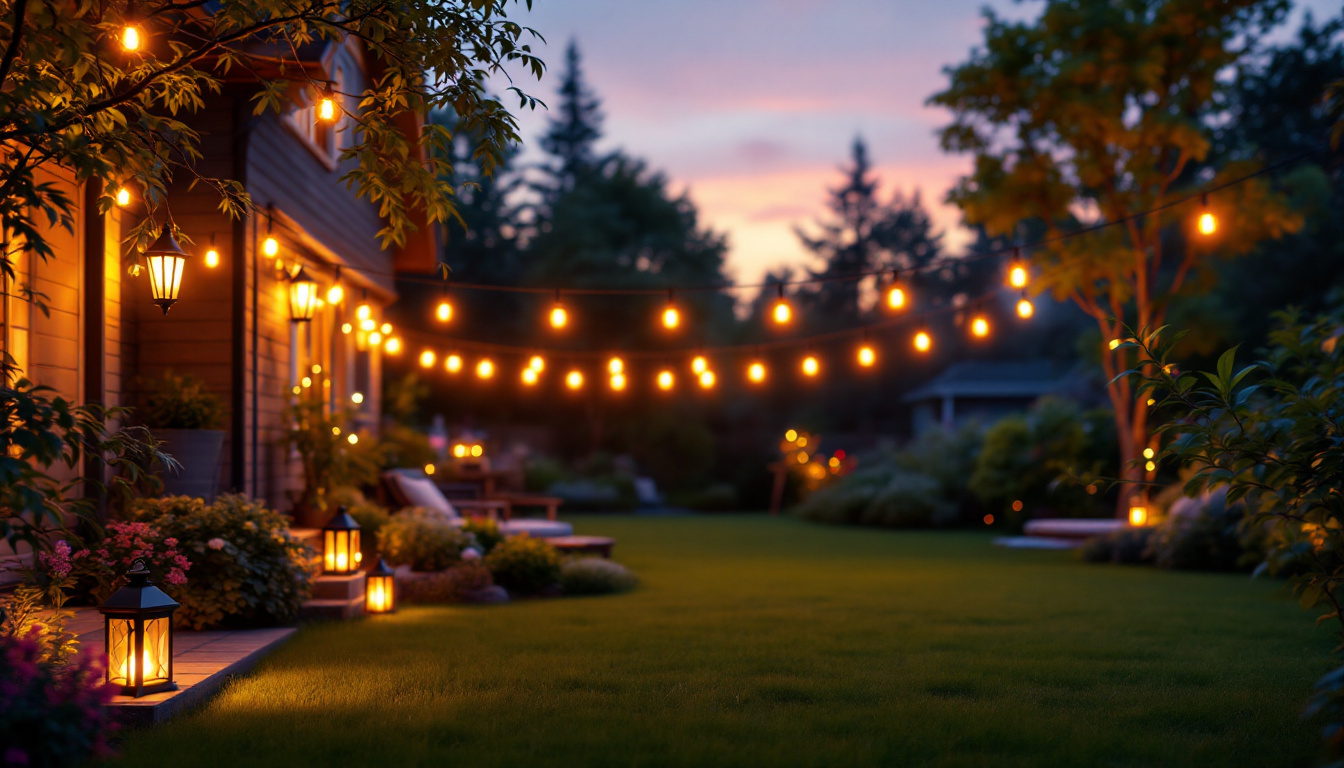
Outdoor lighting plays a crucial role in enhancing the aesthetics, safety, and functionality of residential properties. For lighting contractors, understanding the nuances of outdoor front lighting is essential to deliver quality service and meet client expectations. This article outlines key do’s and don’ts that can guide contractors in their projects.
Outdoor front lighting serves multiple purposes, ranging from enhancing curb appeal to ensuring safety during nighttime. It illuminates pathways, highlights architectural features, and provides a welcoming ambiance for guests. Moreover, well-planned lighting can deter crime and enhance security, making it a vital aspect of any residential project.
One of the primary reasons homeowners invest in outdoor lighting is to beautify their property. Strategically placed lights can accentuate landscaping, architectural details, and outdoor living spaces. The right fixtures can create a stunning visual impact, making the home stand out in the neighborhood. For instance, uplighting can be used to cast dramatic shadows on trees or walls, while downlighting can create a soft glow that enhances the natural beauty of gardens and patios. The choice of fixtures, from modern sconces to vintage lanterns, also plays a crucial role in complementing the overall design of the home, allowing homeowners to express their personal style and taste.
Proper lighting is essential for safety. It helps prevent accidents by illuminating walkways, steps, and driveways. Additionally, well-lit areas can deter potential intruders, making properties less appealing targets for crime. Therefore, contractors must prioritize safety in their lighting designs. Motion sensor lights can be particularly effective, as they not only provide illumination when needed but also alert homeowners to any movement around their property. Furthermore, integrating smart lighting systems can enhance security measures by allowing homeowners to control their outdoor lights remotely, ensuring that their property remains well-lit even when they are away. This combination of functionality and technology creates a safer environment, giving residents peace of mind as they navigate their outdoor spaces after dark.
Understanding the best practices in outdoor lighting design is essential for contractors. Here are some do’s that can help ensure successful installations.
Before starting any project, it’s crucial to assess the space thoroughly. Consider the layout, existing features, and the purpose of the lighting. Take note of any obstacles, such as trees or structures, that may affect light placement. A comprehensive assessment will guide the design process and help in selecting appropriate fixtures. Additionally, think about how the space will be used at different times of the day and year. For example, a garden might require different lighting for evening gatherings compared to early morning strolls. Understanding these nuances can lead to a more tailored lighting solution that enhances the overall experience of the space.
Choosing the right fixtures is vital for achieving the desired effect. Consider the style of the home and the surrounding landscape when selecting fixtures. For instance, modern homes may benefit from sleek, minimalist designs, while traditional homes may require more ornate fixtures. Additionally, ensure that the fixtures are rated for outdoor use to withstand weather conditions. When selecting fixtures, also think about the color temperature of the bulbs; warmer tones can create a cozy atmosphere, while cooler tones can provide a more vibrant and energetic feel. Mixing different types of fixtures, such as path lights, wall sconces, and spotlights, can also add depth and dimension to the lighting scheme.
Energy efficiency is a significant consideration in outdoor lighting. Opt for LED fixtures, which consume less power and have a longer lifespan compared to traditional bulbs. Furthermore, incorporating smart lighting solutions can enhance energy efficiency by allowing homeowners to control their lighting remotely or set schedules. Consider integrating motion sensors and timers to ensure lights are only on when needed, which can significantly reduce energy consumption. Additionally, educate clients about the benefits of solar-powered lights for areas that receive ample sunlight, as these can provide an eco-friendly option that requires minimal maintenance while still delivering effective illumination.
While there are many best practices to follow, there are also common pitfalls that contractors should avoid. Here are some don’ts to keep in mind.
One of the most common mistakes in outdoor lighting is over-illumination. Too much light can create harsh shadows and diminish the overall aesthetic appeal. Instead, aim for a balanced approach that highlights key features without overwhelming the space. Use a combination of ambient, task, and accent lighting to create depth and interest. Consider the use of dimmers or smart lighting systems that allow for adjustment based on the time of day or occasion, ensuring that the lighting can adapt to the needs of the space and its users. This flexibility not only enhances the functionality of the lighting but also contributes to energy efficiency, reducing unnecessary power consumption.
Proper wiring is essential for any outdoor lighting project. Neglecting this aspect can lead to safety hazards and malfunctions. Ensure that all wiring is rated for outdoor use and buried at the appropriate depth to prevent damage from weather and landscaping activities. Additionally, consider using conduit for added protection in high-traffic areas. It’s also wise to plan for future maintenance by leaving accessible junction boxes and ensuring that all connections are waterproofed. This foresight can save time and money in the long run, as it simplifies troubleshooting and repairs, allowing for a seamless experience for both the contractor and the client.
Every region has specific regulations regarding outdoor lighting, including restrictions on brightness and light pollution. Contractors must familiarize themselves with local codes to avoid potential fines and ensure compliance. Ignoring these regulations can lead to costly adjustments and unhappy clients. Furthermore, understanding these regulations can also provide opportunities for innovation; for instance, utilizing energy-efficient fixtures that comply with local sustainability initiatives can enhance a contractor’s reputation as a responsible and knowledgeable professional. Staying informed about changes in legislation can also help contractors anticipate future trends and adapt their services accordingly, ensuring they remain competitive in a rapidly evolving market.
Designing an effective outdoor lighting scheme requires careful consideration of various factors. Here are some key design elements to keep in mind.
Layering light is a fundamental principle in outdoor lighting design. This technique involves combining different types of lighting—ambient, task, and accent—to create a well-rounded illumination scheme. Ambient lighting provides general illumination, task lighting focuses on specific areas, and accent lighting highlights architectural features or landscaping.
Focal points are essential in outdoor lighting design. They draw attention to specific areas, such as a beautiful tree, a garden sculpture, or the entrance of the home. By strategically placing accent lights on these features, contractors can enhance the overall appeal and create a more inviting atmosphere.
The color temperature of light can significantly affect the ambiance of outdoor spaces. Warmer tones (2700K-3000K) create a cozy and inviting atmosphere, while cooler tones (4000K-5000K) can feel more modern and energetic. It’s important to consider the desired mood and select fixtures that emit the appropriate color temperature.
Outdoor fixtures are exposed to the elements, which can lead to dirt and grime buildup. Regular cleaning is essential to maintain the appearance and functionality of the lights. Use a soft cloth and mild detergent to clean fixtures, and ensure that bulbs are free from obstructions to maximize light output.
Regularly inspect the lighting system for any signs of damage, such as frayed wires, broken fixtures, or burnt-out bulbs. Promptly addressing these issues can prevent further damage and ensure that the lighting remains safe and effective.
Seasonal changes can affect outdoor lighting systems. For instance, during winter, snow and ice can accumulate around fixtures, necessitating adjustments to ensure proper illumination. Encourage clients to assess their lighting systems periodically and make necessary adjustments based on seasonal changes.
Staying updated on the latest trends in outdoor lighting can help contractors offer innovative solutions to their clients. Here are some current trends worth noting.
Smart lighting technology is revolutionizing outdoor lighting. Homeowners are increasingly interested in systems that can be controlled via smartphones or voice-activated devices. These solutions allow for greater flexibility and customization, enabling users to adjust brightness, color, and schedules with ease.
As sustainability becomes a priority for many homeowners, solar-powered fixtures are gaining popularity. These environmentally friendly options harness solar energy to power outdoor lights, reducing electricity costs and minimizing the carbon footprint. Contractors should consider incorporating solar options into their offerings.
Minimalism continues to influence outdoor lighting design. Homeowners are gravitating towards sleek, unobtrusive fixtures that blend seamlessly with their landscapes. This trend emphasizes functionality while maintaining a clean and modern aesthetic, making it essential for contractors to stay attuned to evolving design preferences.
Outdoor front lighting is a vital aspect of residential design that requires careful planning and execution. By adhering to the do’s and don’ts outlined in this article, lighting contractors can enhance their projects, ensuring that they meet client expectations while delivering functionality and aesthetic appeal. Staying informed about design trends and maintenance practices will further empower contractors to provide exceptional service in this ever-evolving field.
Ready to elevate your outdoor front lighting projects with the highest quality fixtures at unbeatable prices? Look no further than LumenWholesale. Our spec-grade lighting selection is designed to meet the rigorous demands of any project, ensuring reliability and performance that stands the test of time. Say goodbye to inflated markups and hello to hassle-free bulk buying with free shipping. Don’t compromise on quality or value—choose LumenWholesale for the perfect blend of affordability and convenience. Discover our wholesale lighting at the best value and make your next project shine.

Discover the answers to lighting contractors’ most common questions about the Nema 6 15R receptacle.

Discover how solar lights can transform your flower beds into stunning nighttime displays.

Discover the ins and outs of astronomic timers tailored for lighting contractors.

Illuminate your outdoor space with confidence using our comprehensive lighting contractors’ checklist.